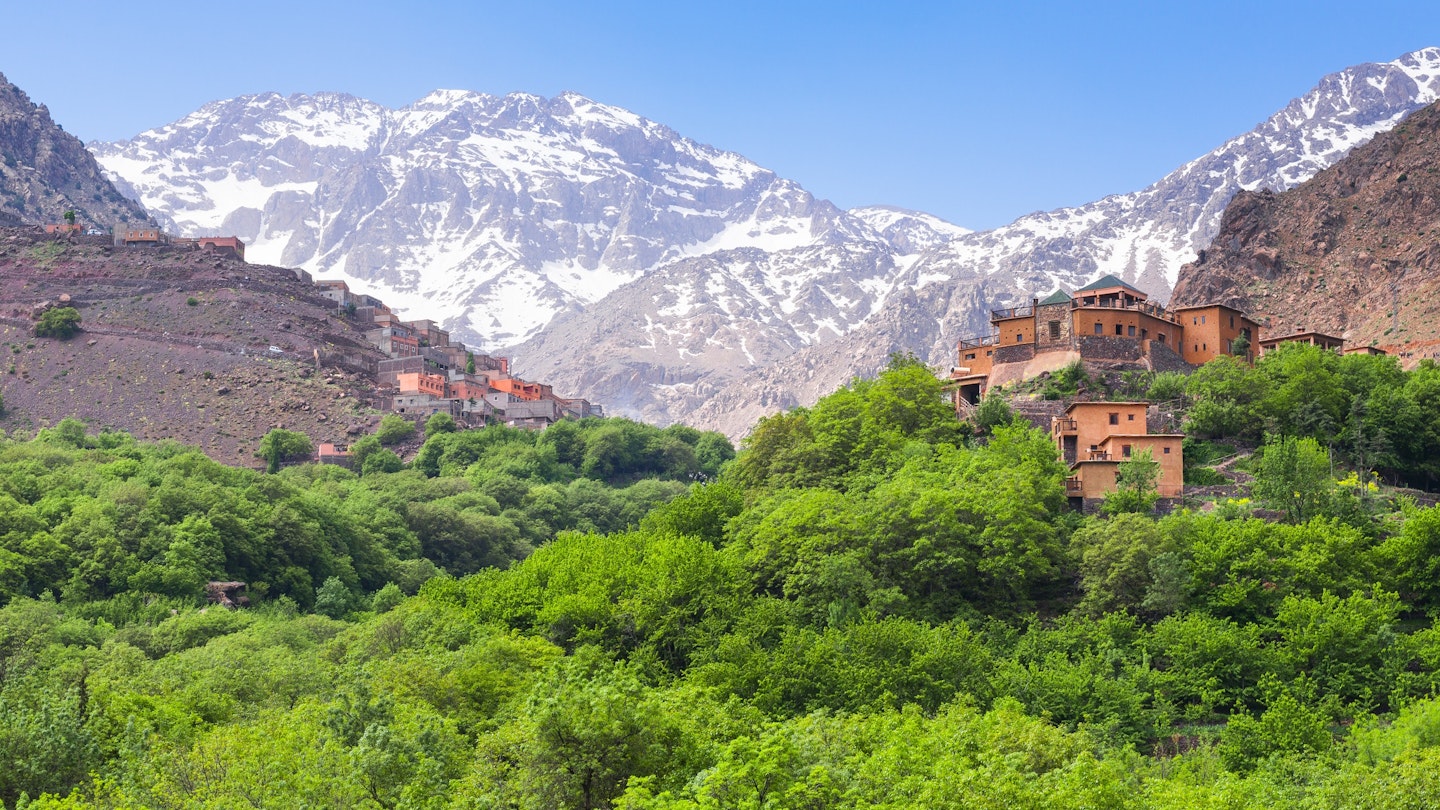Discover Incredible Hiking Trails in Morocco’s High Atlas Mountains
Being the highest peak in North Africa, the 4167m summit of Toubkal has become the most popular tourist draw in the High Atlas Mountains of Morocco. However, the best trails are actually found beyond Toubkal’s crown. While crowds ascend the two-day ascent of Toubkal, an abundance of incredible routes across rugged ridges remains largely unexplored by tourists.
These trails follow centuries-old shepherds’ paths between remote villages, allowing hikers to interact with Amazigh (Berber) villagers and experience their unique hospitality, architecture, and language. Along the way, trekkers can cross mountain pastures, skirt below craggy massifs, and traverse panoramic passes. Consequently, these routes provide a culturally immersive experience and a variety of landscapes that a direct summit shot could never hope to match.
Toubkal Circuit
Starting from the same trailhead as the Toubkal ascent and eventually climbing to the same summit, this circuit bypasses the direct summit path to follow a seven-day ring around the Toubkal Massif. This journey offers a challenging landscape that explores the traditional lifestyles of the region.
It’s necessary to have a local guide for this trek, which greatly enhances the cultural insights along the trail. As trekkers pass the homes of seasonal herders in the summer pastures of Azib Likemt, they may be invited for tea by these locals, who live an agricultural and pastoral lifestyle that has been practiced in the valley for centuries.
Descending into the village of Amsouzart, through prosperous walnut orchards and past crumbling pisé (rammed earth) houses now abandoned for modern constructions, the curiosity of village children is often met with friendly greetings from shopkeepers. Hikers may have the opportunity to sample the valley’s exquisite local honey.

Above Amsouzert, Ifni Lake is a popular weekend getaway for Marrakechis escaping the summer heat; for hikers, it is primarily a stop for lunch or a refreshing orange juice before ascending towards a campsite just below the Tizi n’Ouanoums pass.
Although not straightforward and a bit treacherous, a small side path leads up the backside ascent of the Toubkal Pass (4000m) to join the final leg towards the summit. Hikers often continue over the Tizi n’Aguelzim pass to the impressive Cascades d’Irhoulidene before looping back to the trailhead.
M’Goun Traverse
Trails through flowing streams and rocky ravines, with overnights in remote villages under towering kasbahs, characterize the three-day M’Goun Traverse. The 4071m Jbel M’Goun dominates this route. This rugged landscape and the historical resistance to central authority have left the valleys culturally and geographically disconnected from regions closer to Marrakesh.
Hikers can traverse numerous old shepherds’ trails that cross the mountains, including the prolonged hike above Aït Bougoumez to the Tifra Valley village of Rougoult. This picturesque village features traditional houses overlooking verdant fields alongside the Tifra River. Trekkers often stay in informal guesthouses or sleep beneath the stars, enjoying the view of high peaks that divide the shimmering stars above from the village lights below.

Atop the 2900m Tizi n’Rougoult, extensive views stretch across the horizon, past ochre rock walls. The descent leads to the prosperous village of Amezri, largest in the region, offering warm welcomes that encourage exploration.
The final stretch down the Tassaout Valley offers hikers a choice: a straightforward road walk through pleasant villages or a higher-altitude trail navigating shepherds’ pastures, concluding in Aït Alli n’Ito at one of the region’s best guesthouses, ideal for day hikes to nearby traditional villages.
Jbel Saghro
The Saghro Massif contrasts with Morocco’s more popular hiking destinations. Harsh desert landscapes and palm-flanked oases replace the lush valleys and scattered villages of higher elevations, yet the views are equally breathtaking, with equally warm hospitality.
Hiking days tend to be longer here, encompassing both distance and duration. The trails peak out at the 2712m Amalou n’Mansour, resulting in shorter climbs and gentler slopes. Paired with restful lunches to escape midday heat, a Saghro hike can feel like a more laid-back alternative to the more renowned regions of the Atlas.
The diverse low-lying, hikeable passes throughout Saghro offer numerous options for loop hikes or one-way walks amid cultural and natural highlights. The village of Assaka n’Aït Ouzzine features a centuries-old agadir (traditional granary) amid a picturesque oasis, with palm trees lining nearby streams.
At the intersection of three valleys, dirt roads lead to dramatic landscapes, including peaks that rival Toubkal’s views. The breathtaking panorama captures not only the diverse Moroccan landscapes but also countless valleys, villages, and hikes waiting to be uncovered.




